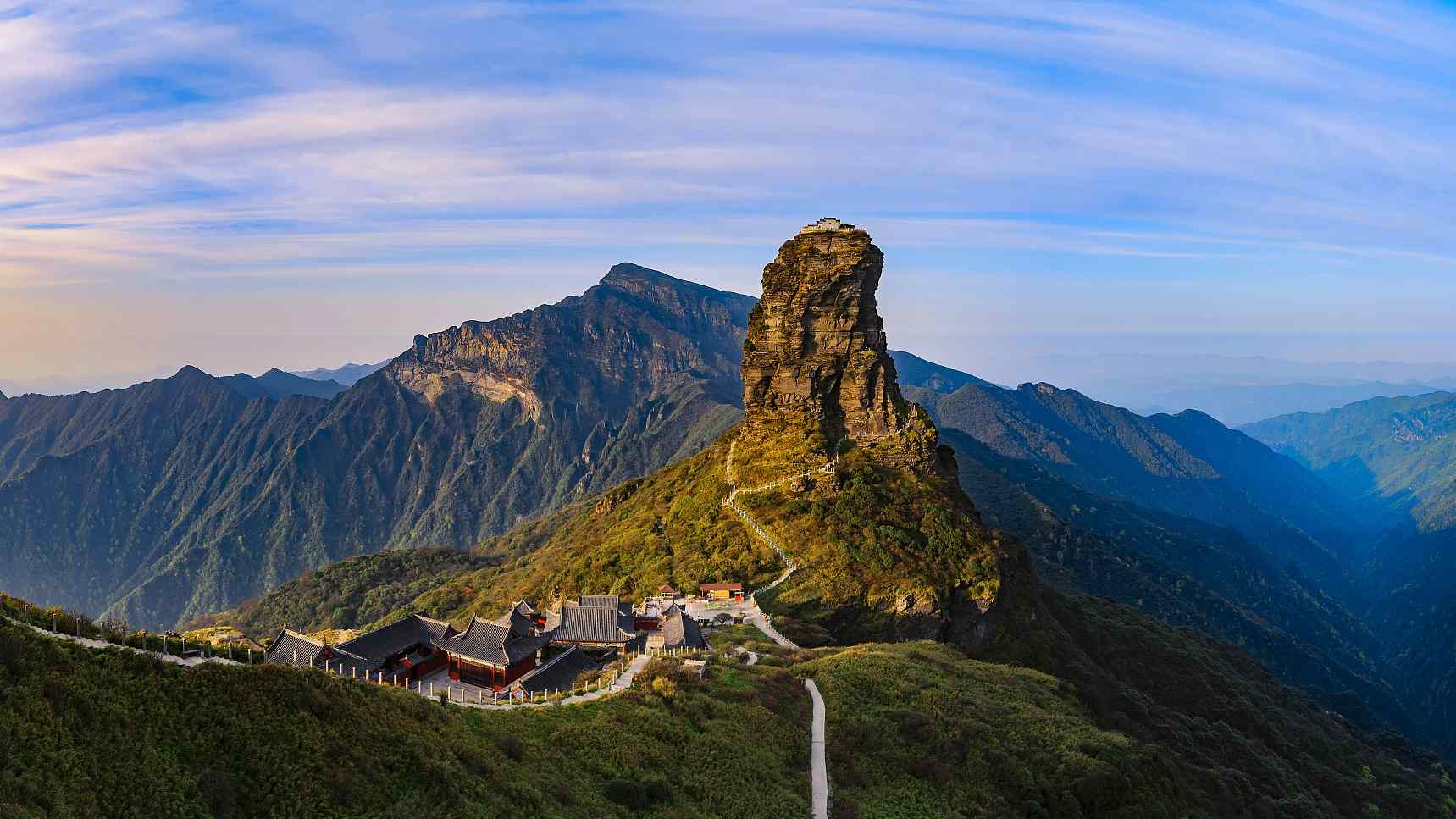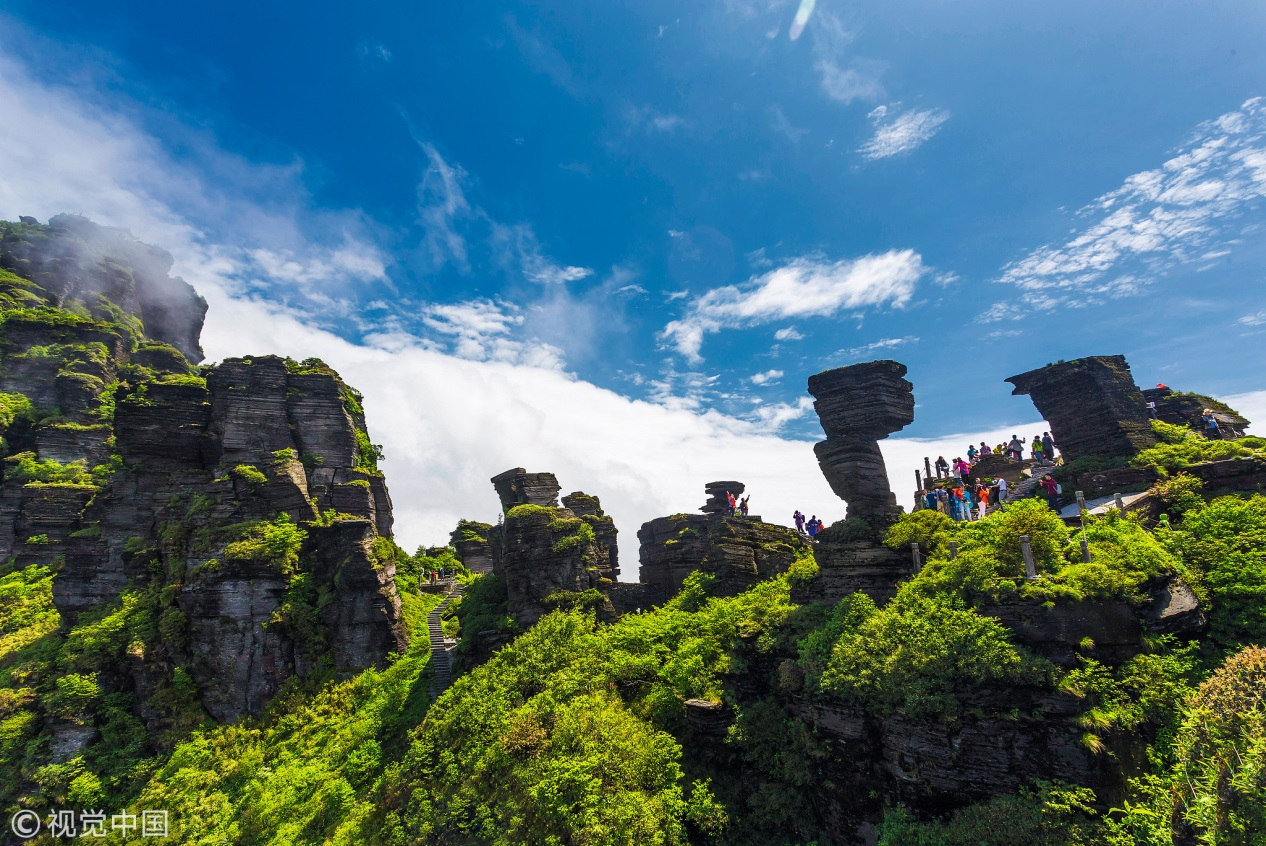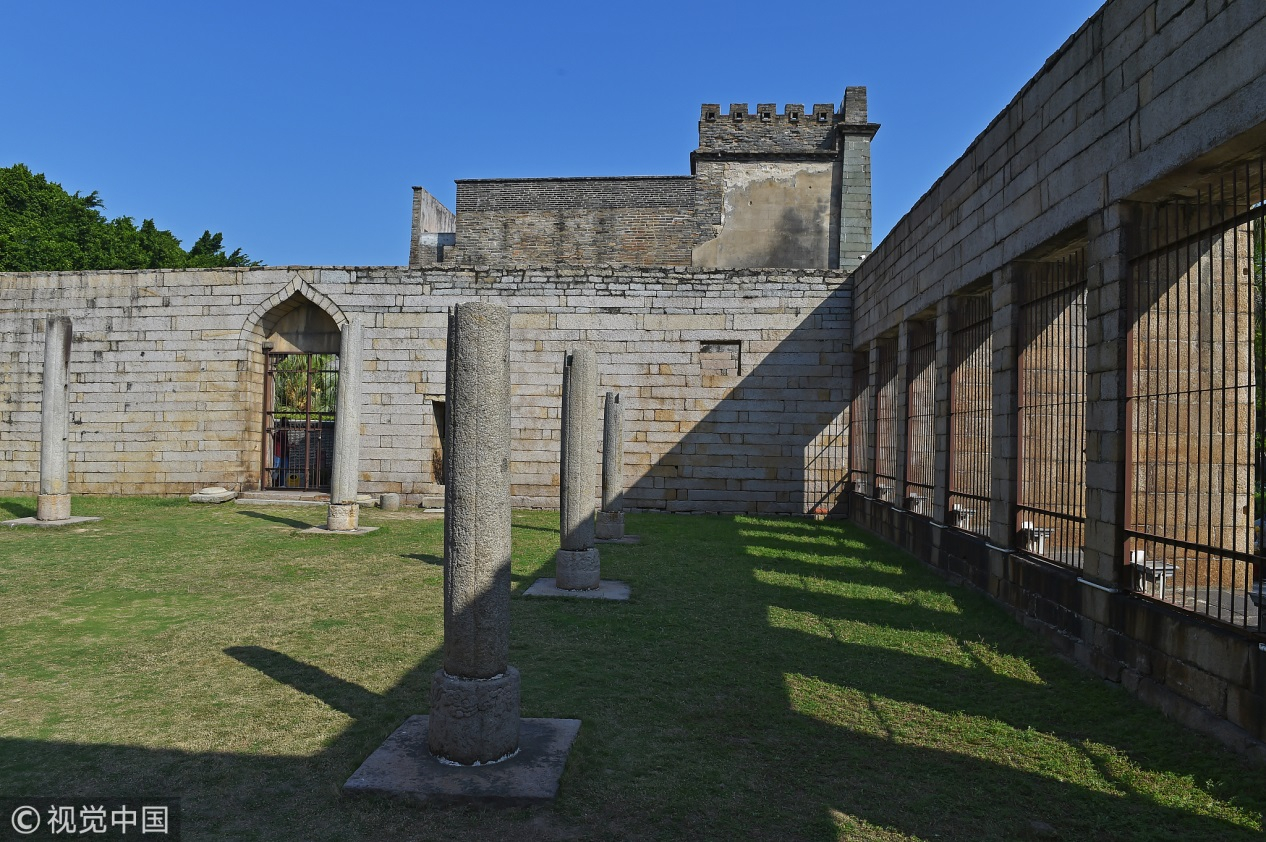
China
17:02, 02-Jul-2018
China’s Mount Fanjingshan enlisted in UNESCO’s World Heritage Sites
Updated
16:25, 05-Jul-2018
CGTN

The ongoing 42nd Session of the World Heritage Committee in Bahrain on Monday inscribed China’s Mount Fanjingshan to UNESCO’s World Heritage Sites.
Mount Fanjingshan, one of the five nominations made for natural sites this year, was submitted by China, together with Ancient Quanzhou Citong Relics. There were altogether 30 applications, and aside from the five natural nominations, there were also three for both cultural and natural, and 22 nominations for cultural.
Mount Fanjingshan, located in southwest China’s Guizhou Province, is the highest peak of the Wuling Mountain range running across several provinces and municipalities in the area including Chongqing, Guizhou and Hunan.

File of Mount Fanjingshan. /VCG Photo
File of Mount Fanjingshan. /VCG Photo
It is renowned for housing a diverse array of flora and fauna, including 31 endangered plants and 19 threatened animals. There are around 2,000 types of plants and 801 animals in the area, and has been dubbed the “the gene database” of China.
The Mount Fanjingshan has also reserved the most complete primeval forest on the same latitude. At least 95 percent of the mountain is covered by forest.
Besides, the area is also one of the five Buddhist mountains in China, which receives hundreds of thousands of tourists every year.
The Ancient Quanzhou Citong Relics has been nominated for the cultural sites. It is believed to be the starting point of the Maritime Silk Road in China.
Citong is the old name of Quanzhou city during the Song and Yuan dynasties (960-1368), the time when China’s Maritime Silk Road was flourishing. The area still preserves quite a number of historical relics which could reflect the city as an important port to ancient China’s navigation and trade.

Relics of China’s ancient mosque in Quanzhou city. /VCG Photo
Relics of China’s ancient mosque in Quanzhou city. /VCG Photo
The area was also recorded and described by many explorers and travelers at that time, who depicted the port city as one of the biggest harbors in the world. Marco Polo, one of the most famous Westerners who introduced China to the world at his time, seemed to have set out from the city while accompanying a Mongolian Princess for her marriage in Persia.
China previously has 52 areas on the World Heritage Sites list.
1515km

SITEMAP
Copyright © 2018 CGTN. Beijing ICP prepared NO.16065310-3
Copyright © 2018 CGTN. Beijing ICP prepared NO.16065310-3